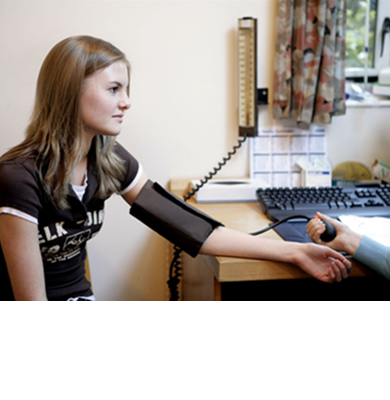Managing CFS/ME in Adolescence



This session introduces the learner to the management of chronic fatigue syndrome/myalgic encephalomyelitis (CFS/ME) in young people. It examines the different interventions and strategies and when it is most appropriate to use these.
Learning Objectives
By the end of this session you will be able to:
- Recognise the principles of managing CFS/ME in young people
- Describe effective management techniques for treating CFS/ME in young people
- Identify how to apply different management strategies
- Identify what to include in a treatment package and when to refer for specialist help
Once a diagnosis of chronic fatigue syndrome/myalgic encephalomyelitis (CFS/ME) has been made, a comprehensive management plan should be devised with the young person and their family.
While management of CFS/ME has been controversial over past years, there is increasing consensus, and some evidence, that once treatable causes of symptoms have been excluded, management based on a rehabilitative model is helpful for most young people.
Before commencing this session you should:
- AH_13_003 Assessment and Diagnosis of Chronic Fatigue Syndrome in Adolescence
Anna works as the Nurse Consultant in Adolescent Health at Great Ormond Street Hospital where she leads the Adolescent Health service. A major part of this work is delivering an outpatient multidisciplinary chronic fatigue service for children and young people. She has worked in adolescent medicine at Great Ormond Street Hospital for the past ten years, and with young people with CFS/ME for the past eight years. Anna has worked with transition issues for the past nine years and is a transition champion. Anna’s particular interests are chronic illness in adolescence, CFS/ME, family work and transition from paediatric/adolescent to adult care.

- Anaesthesia Fundamentals | Physiology | Ventilatio...
- Posted By eIntegrity Healthcare e-Learning
- Posted Date: 2024-12-26
- Location:Online
- This session describes how and why ventilation and perfusion vary in the healthy lung. Causes of hypoxia, such as hypoventilation, increased dead space and shunt, are discussed to help the trainee explain and manage hypoxia clinically.
- Anaesthesia Fundamentals | Physiology | Pulmonary ...
- Posted By eIntegrity Healthcare e-Learning
- Posted Date: 2024-12-26
- Location:Online
- This session covers the measurement and clinical importance of lung volumes, including functional residual capacity and dead space. Information regarding the performance and interpretation of flow-volume loops is also included.
- Anaesthesia Fundamentals | Physiology | Co2 Carria...
- Posted By eIntegrity Healthcare e-Learning
- Posted Date: 2024-12-26
- Location:Online
- This session covers the physiology of how carbon dioxide is carried by blood, including its conversion into bicarbonate ions and the role of the red blood cell and haemoglobin in this process. The session also describes how buffers work, and the fundament
- Anaesthesia Fundamentals | Physiology | Function o...
- Posted By eIntegrity Healthcare e-Learning
- Posted Date: 2024-12-26
- Location:Online
- This session focusses on the function of haemoglobin in oxygen (O2) carriage from the lungs to other tissues where cells are supplied with the O2 required for oxidative phosphorylation in the mitochondria. We will cover the structure
- Anaesthesia Fundamentals | Physiology | Gaseous Ex...
- Posted By eIntegrity Healthcare e-Learning
- Posted Date: 2024-12-26
- Location:Online
- This session will introduce you to the physiological effects of altitude and the adaptations that occur with acclimatization. It also introduces the pathology and physiology of high pressure and decompression.








